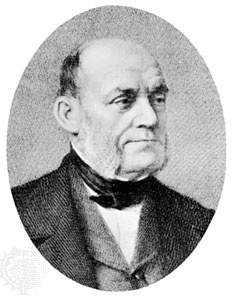Rokitansky, Karl, Freiherr von
Austrian pathologist
(baron of )
born Feb. 19, 1804, Königgrätz, Austria
died July 23, 1878, Vienna
 Austrian pathologist whose endeavours to establish a systematic picture of the sick organism from nearly 100,000 autopsies—30,000 of which he himself performed—helped make the study of pathological anatomy a cornerstone of modern medical practice and established the New Vienna School as a world medical centre during the latter half of the 19th century.
Austrian pathologist whose endeavours to establish a systematic picture of the sick organism from nearly 100,000 autopsies—30,000 of which he himself performed—helped make the study of pathological anatomy a cornerstone of modern medical practice and established the New Vienna School as a world medical centre during the latter half of the 19th century.A professor of pathological anatomy (1844–74) at the Vienna General Hospital, he inspired the Bohemian student Ignaz Semmelweis (Semmelweis, Ignaz Philipp), later a martyr to the cause of antiseptic medical practice, to take up the study of medicine (1846) and afterward supported him in his struggle to eliminate childbed fever by cleaning up Europe's maternity wards.
First to detect bacteria in lesions of malignant endocarditis, an often rapidly fatal inflammation of the membrane lining the inner walls of the heart, Rokitansky created the basis for a differentiation of lobar pneumonia (originating in the lower lobe of the lung) and lobular pneumonia, or bronchopneumonia (originating in the finer subdivisions of the branched bronchial tree). He made a fundamental study of acute yellow atrophy of the liver (now known as Rokitansky's disease; 1843), established the micropathology of pulmonary emphysema (a condition of the lung characterized by enlarged air spaces separated from the terminals of the bronchial tree), and first described spondylolisthesis (1839), the forward displacement of one vertebra over another.
His Handbuch der pathologischen Anatomie, 3 vol. (1842–46; Treatise of Pathological Anatomy, 1849–52), represented an elevation of the discipline to the status of an established science.